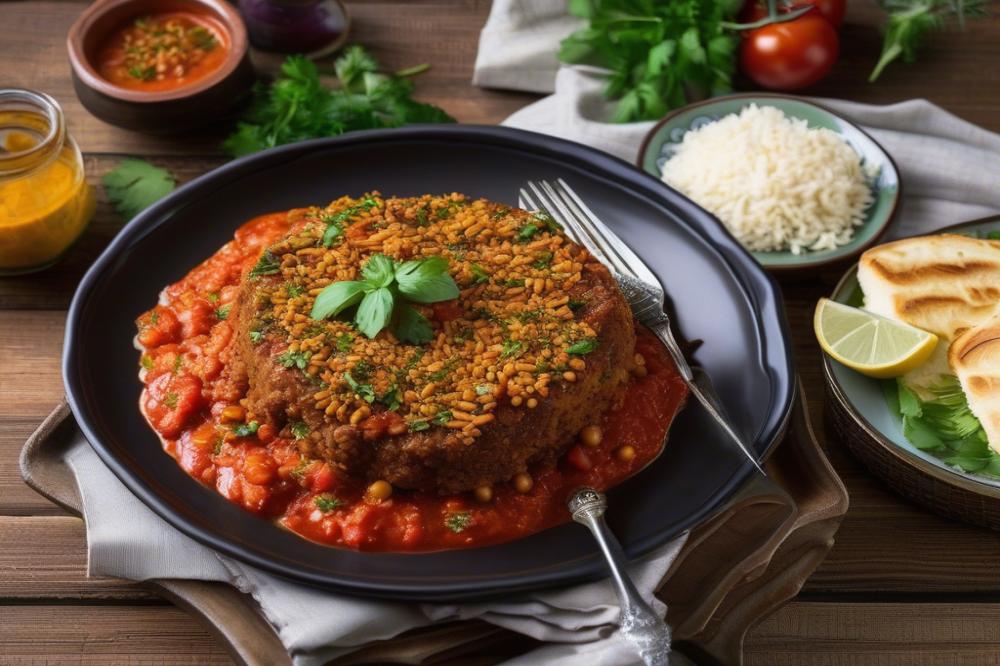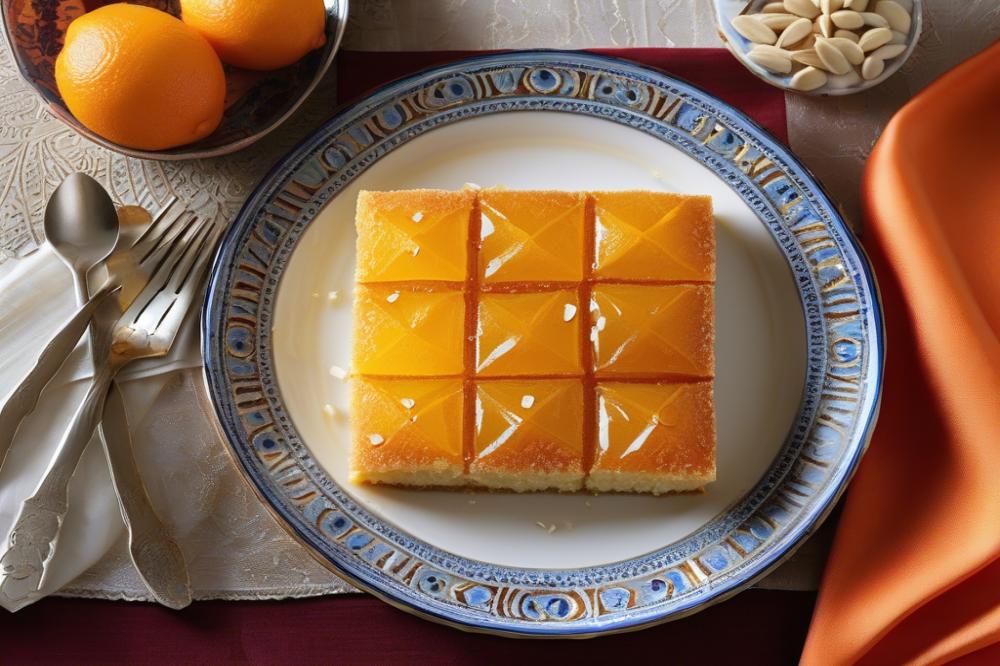Overview of Moroccan Cuisine
Moroccan cuisine is a vibrant tapestry woven from diverse influences. It combines elements from Berber, Arab, Mediterranean, and African culinary traditions. This mixture results in a wide range of flavorful dishes that reflect the rich culture of the region. Spices play a crucial role in this cuisine, as they bring depth and complexity. Ingredients such as saffron, cumin, and paprika are often used, contributing to the memorable tastes that distinguish Moroccan food.
Importance of Cooking Techniques

Mastering Moroccan cooking techniques is essential for bringing out the true essence of each dish. Stewing is a common method, allowing flavors to meld beautifully over time. tagine cooking is renowned, with its conical lid creating a unique steam environment for moisture retention. Grilling also finds its place in this culinary art, adding a smoky flavor that tantalizes the palate. These methods highlight the importance of patience and precision in preparing meals.
Connection to Cultural Heritage and Culinary History

Moroccan cooking techniques are more than just methods; they embody centuries of culinary history and cultural heritage. Each dish tells a story, often steeped in tradition and family gatherings. For instance, couscous is more than a staple; it is a symbol of hospitality and celebration. Mint tea, an iconic beverage, signifies friendship and warmth, commonly served in social settings. Through these practices, the Moroccan people preserve their identity while sharing their culinary delights with the world.
Moroccan Cooking Techniques

Stewing forms a central aspect of Moroccan cuisine. It involves slowly cooking ingredients in a flavorful broth. The result is tender meat and rich sauces that absorb the essence of spices. Stews often feature lamb or chicken, paired with vegetables and chickpeas. Various spices, such as cumin and coriander, are often added, enhancing every bite with complex flavors.
Grilling is another favored method. Meats cooked over an open flame develop a smoky taste. Popular choices for grilling include juicy kebabs and spiced sausages, known as merguez. This technique allows for the Maillard reaction, creating a savory crust on the meat. Customers often savor these dishes at outdoor venues, where the aroma fills the air.
tagine: A Culinary Icon
The tagine is a signature cooking vessel in Moroccan kitchens. Its conical shape allows steam to circulate, preserving moisture. This unique method of slow cooking enhances flavors. Ingredients meld together beautifully, making each dish a delightful experience. Cooks often make tagines using fresh meat and seasonal vegetables. The resulting meal is aromatic and deeply satisfying.
Spices play a crucial role in the flavor profiles of Moroccan dishes. Commonly used spices include saffron, paprika, and ginger. These ingredients elevate the overall taste, providing warmth and depth. Fresh herbs, such as cilantro and parsley, contribute bright notes to dishes. Mint is particularly popular, often steeped in beverages like mint tea, offering a refreshing finish to spicy meals.
Culinary Traditions and Influence
Moroccan culinary history influences cooking methods extensively. Each region in Morocco brings its unique techniques and flavors. Coastal areas focus on seafood, while mountainous regions embrace hearty stews. Elements from Berber, Arab, and Mediterranean cultures all merge in Moroccan food. This rich heritage shapes how dishes are prepared and enjoyed.
Meals often revolve around communal dining, fostering a sense of unity. couscous frequently takes center stage, representing celebration and togetherness. These culinary traditions emphasize the importance of sharing food with family and friends. Every gathering feels special, as flavors and aromas create lasting memories.
Classic Moroccan Recipe: Chicken Tagine with Olives and Preserved Lemons
Chicken tagine with olives and preserved lemons is a cherished recipe in Moroccan culinary history. This dish uses a special cooking vessel called a tagine. It allows for slow stewing, locking in flavors. The ingredients blend wonderfully, creating a unique taste experience. Many families pass down this recipe through generations, making it a beloved tradition in Moroccan homes.
Ingredients list with quantities:
- 4 chicken thighs
- 2 tablespoons olive oil
- 1 large onion, chopped
- 2 garlic cloves, minced
- 2 teaspoons ground ginger
- 1 teaspoon ground cinnamon
- 1 teaspoon saffron threads
- 1 cup green olives, pitted
- 1 lemon, preserved and thinly sliced
- Salt and pepper to taste
- Fresh cilantro and parsley for garnish
Cooking instructions:
- Begin by heating olive oil in a tagine over medium heat. This step prepares the base for flavor.
- Brown the chicken thighs on both sides. This process adds a nice color and depth of flavor.
- Once browned, remove the chicken and sauté the onions and garlic until fragrant. They will release their aromatic qualities here.
- Add spices, including ground ginger and cinnamon, to the pot. Stir them in to explore mesmerizing aromas.
- Return the chicken to the pot. This is where the magic of stewing begins.
- Now add the olives, preserved lemon, salt, and pepper. These ingredients bring a burst of taste.
- Cover the tagine and let it simmer for about 45 minutes. During this time, the chicken will become incredibly tender.
- Before serving, garnish with fresh cilantro and parsley. These herbs add a splash of color and freshness.
This dish pairs beautifully with fluffy couscous. The grains soak up the delicious sauce. For a true Moroccan meal, serve it alongside a glass of traditional mint tea. Enjoying this meal offers an authentic taste of Moroccan culture.
Nutritional information shows the benefits of this dish. Chicken provides protein and essential vitamins. Olives offer healthy fats, contributing to overall wellness. Preserved lemons add vitamin C, supporting the immune system. Various spices included in this recipe also have health benefits. Enjoying such flavors connects you to the rich culinary traditions of Morocco.
Couscous: The Staple of Moroccan Cuisine
Couscous holds a special place in Moroccan cooking. This tiny steamed grain is far more than just a side dish; it serves as a canvas for an array of flavors. When preparing couscous, the process is quite meticulous. First, semolina flour is moistened with water and rolled into small pearls. Next, it is steamed in a traditional pot called a couscoussier, which allows the grains to become light and fluffy. This technique can take time, but it results in a texture that is essential for absorbing the delicious stews served alongside it.
Types of Couscous
Pairing Couscous with Stews and Grilled Meats
Couscous pairs wonderfully with rich stews and grilled meats. Tagines, for example, often feature robust flavors from various spices like saffron, cumin, and coriander. These spices meld beautifully with the grains, creating a harmonious experience. Grilled meats, marinated with herbs and spices, also complement couscous perfectly. A meal is often finished with a fragrant drizzle of olive oil or a sprinkle of fresh herbs, enhancing the dish’s appeal.
Nutritional Benefits of Couscous
This grain offers several nutritional benefits as well. Couscous is a good source of carbohydrates, providing energy for daily activities. Whole grain varieties contain more fiber, aiding in digestion and promoting heart health. Additionally, couscous can be a low-fat option if prepared without heavy sauces. Moreover, enjoying this dish alongside fresh vegetables can boost nutrient intake efficiently.
Overall, couscous is more than just a staple; it is deeply embedded in Moroccan traditions and culture. Cooking it requires skill and patience, rewarding those who embrace the process with flavor and satisfaction.
The Role of Spices and Herbs
Spices play a vital part in Moroccan cooking. Cinnamon, cumin, and coriander are often found in many dishes. Cinnamon offers sweetness, balancing out savory flavors, while cumin adds a warm, earthy taste. Coriander brings a hint of citrus, enhancing the freshness of food. These ingredients create rich layers of flavor that define traditional recipes.
Herbs also contribute greatly to the culinary landscape. Mint and parsley are particularly popular. Mint is not only refreshing but is also used in the famous mint tea, a symbol of hospitality in Moroccan culture. Parsley adds brightness, complementing heavier dishes like tagine and grilled meats. These herbs support both health benefits and vibrant flavors.
Saffron holds a special place in Moroccan cuisine. It is often incorporated into dishes such as couscous and special stews. This prized spice adds a distinct taste and a beautiful golden color. The careful use of saffron elevates meals, making them feel festive and luxurious.
Balancing flavors is essential in Moroccan cooking techniques. Too much of one spice can overwhelm a dish. Chefs strive to create harmony, allowing each flavor to shine without overpowering others. The blend of spices and herbs reflects the complex culinary history and traditions of Morocco. Many popular dishes, such as tagine and couscous, are meticulously prepared to achieve this balance. Spices and herbs are not just an afterthought; they are the heart of Moroccan cuisine.
Moroccan Mint Tea: A Cultural Tradition
Mint tea holds deep cultural significance in Morocco. It is more than just a drink; it represents hospitality and friendship. This traditional beverage is often served to guests as a sign of respect. Pouring tea becomes an art form, showcasing beauty and grace. Sharing mint tea is a cherished ritual during gatherings, celebrations, and even everyday moments.
Ingredients for Preparing Mint Tea
To create this delightful beverage, only a few ingredients are needed. Green tea is the base, offering a rich flavor. Fresh mint leaves add a refreshing touch that balances the beverage. Sugar is crucial as it sweetens the drink, making it enjoyable for all. These three elements combine to create a unique experience in every sip.
Brewing Methods and Serving Customs
Brewing mint tea involves specific steps that reflect Moroccan culinary history. First, water must be boiled before adding green tea. After allowing the leaves to steep, fresh mint is added. This combination infuses the water with vibrant flavors. Potent spices like saffron may also be included for an extra layer of taste. When serving, the tea is traditionally poured from a height, creating a frothy texture. This practice enhances the experience and showcases the importance of presentation.
Nutritional Benefits of Green Tea and Mint
Both green tea and mint offer several health benefits. Green tea is known for its antioxidants, promoting overall health. It can help boost metabolism and improve brain function. Mint provides a fresh aroma and aids digestion. Together, they create a drink that not only delights but also nourishes. The use of herbs in Moroccan cooking techniques emphasizes the balance of flavor and health.
Final Thoughts on Moroccan Cooking
Moroccan cuisine offers a vibrant tapestry of flavors and techniques that reflect its rich history and diverse culture. Among the most memorable methods of preparation is the use of the tagine. This traditional earthenware pot helps to create succulent dishes that combine meat, vegetables, and spices. Steaming food in a tagine allows for maximum flavor absorption, bringing out the best in every ingredient.
Another hallmark of this culinary tradition is the cooking of couscous, a staple that serves as both a side dish and a main course. The art of making couscous involves careful steaming and fluffing for the perfect texture. Different regions may add unique ingredients, infusing each batch with local character and tradition. The emphasis on communal eating further adds to the warmth and authenticity of Moroccan meals.
Exploring Moroccan cooking techniques opens up a world rich in aromas and tastes. Each dish tells a story of its origins and the people who created it. In addition, spices play a crucial role, each one adding layers of complexity that excite the palate. Cinnamon, saffron, and cumin are just a few examples of the robust flavors that define this cuisine.
For those interested in diving deeper, numerous recipes await your discovery. Trying your hand at these methods not only educates but also connects you to a vibrant culinary heritage. So, gather some ingredients, invite friends over, and embark on a journey through Moroccan flavors. The joy of cooking is not just in the eating but in the experience itself.



